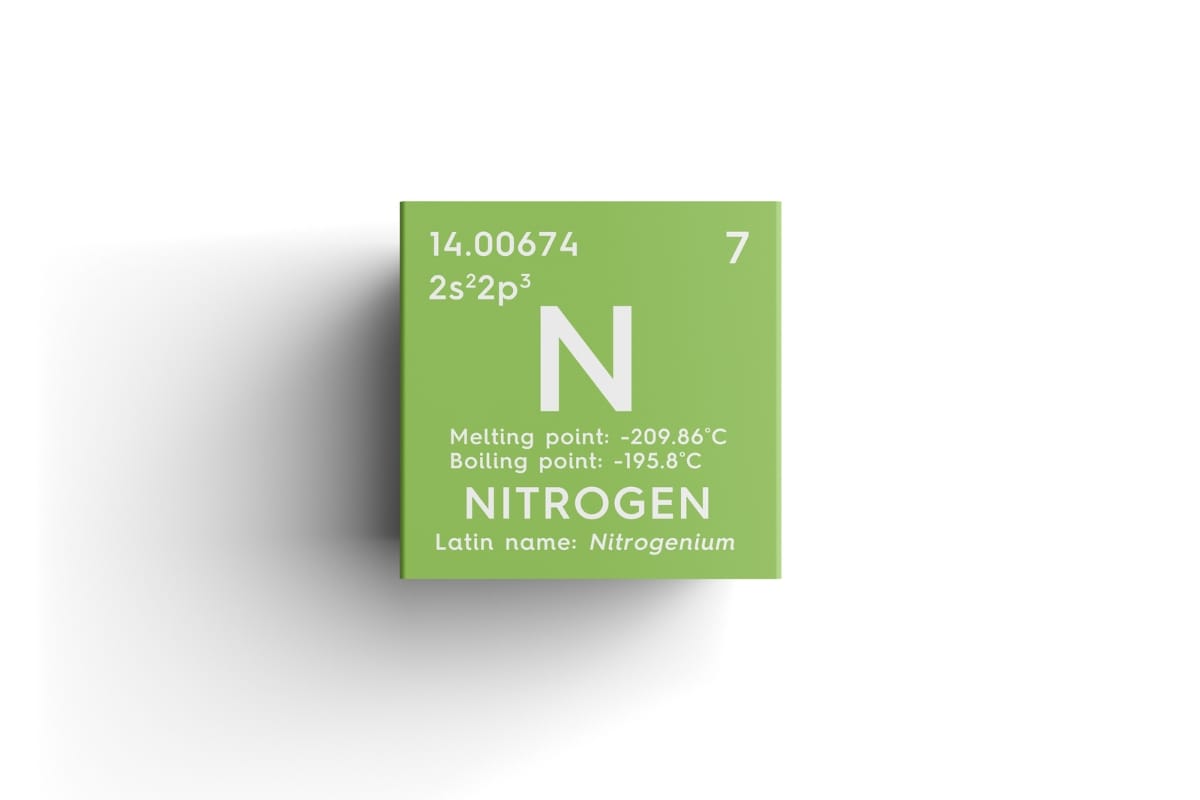Managing nitrogen emissions in septic systems is a critical concern for both the environment and property owners. Keep reading to discover how upgrading systems, regular maintenance, and natural solutions can contribute to a healthier septic system and a cleaner community. Dive into the essential steps for reducing nitrogen pollution emissions and protecting our waterways.
Innovative Septic Systems Designed to Tackle Nitrogen Pollution
Understanding the Impact of Nitrogen on Septic Systems
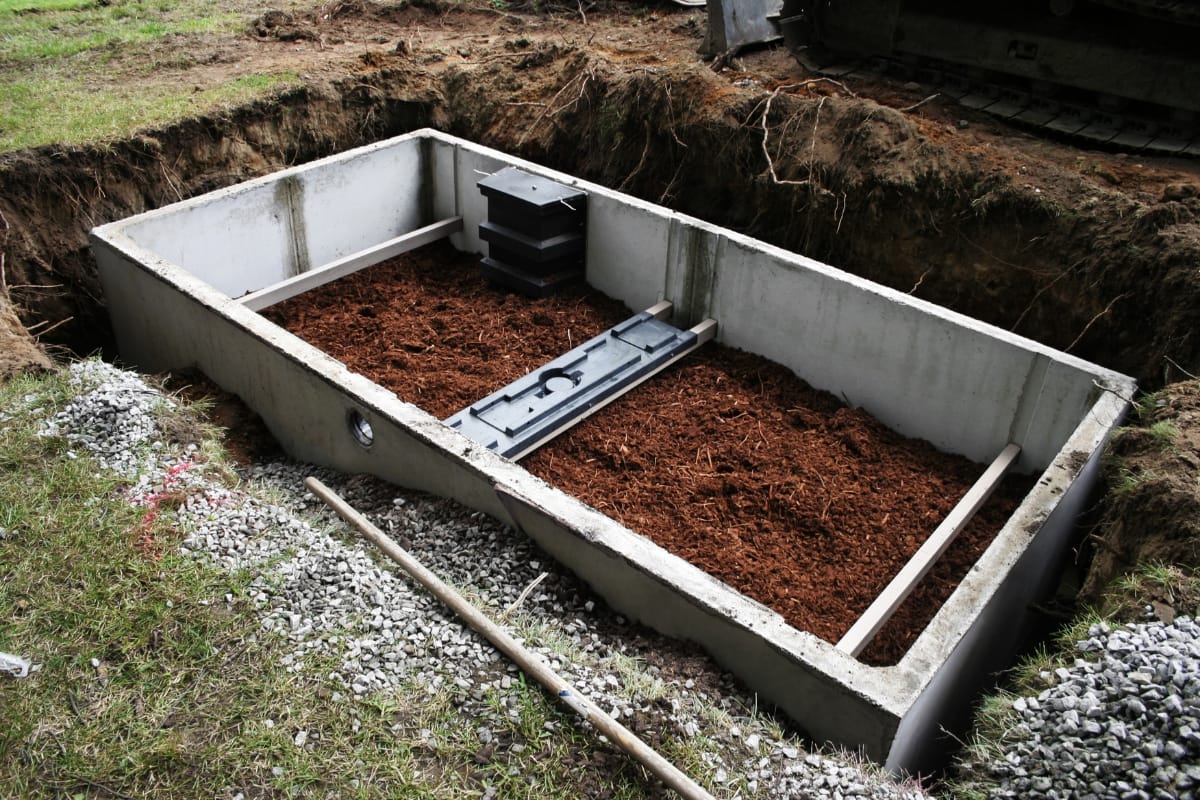
Nitrogen plays a significant role once it enters the ecosystem, primarily through surface runoff and wastewater. It’s important to be aware of these to understand the best way to keep your septic system in top condition.
What Nitrogen Does Once It Enters the Ecosystem
Nitrogen enters the ecosystem primarily through runoff and treated wastewater, impacting local wildlife and plant life. High nitrogen levels can cause explosive growth of algae in lakes and ponds, disrupting the food chain and harming delicate ecosystems.
To mitigate these effects, adopting the best available technology in septic systems is crucial, helping to manage nitrogen emissions and maintain a healthy lawn and environment.
The Role of Septic Systems in Nitrogen Pollution
Septic systems can inadvertently contribute to nitrogen pollution, which poses risks to local water quality and aquatic ecosystems. When these systems fail or are not maintained properly, nitrogen can seep into groundwater or surface water, leading to harmful algal blooms.
These blooms can significantly disrupt wetland ecosystems, affecting wildlife and plant health, which emphasizes the need for robust environmental protection measures.
| Source of Nitrogen | Impact on Ecosystems | Regulatory Body |
|---|---|---|
| Septic Systems | Contributes to harmful algal blooms | Florida Department of Environmental Protection |
| Runoff | Affects local wetlands and wildlife | Environmental protection agencies |
| Wastewater | Degrades water quality | State tax regulations |
The Consequences of High Nitrogen Emissions for Water Quality
High nitrogen emissions from septic systems can drastically affect water quality, leading to serious environmental repercussions.
When effluent containing excessive nitrogen breaks down, it can flood local water bodies with nutrients, fostering harmful algal blooms that consume oxygen and disrupt aquatic ecosystems. Such outcomes often attract the attention of regulation and law enforcement agencies, spurring the need for stricter measures to manage effluent and protect water resources from further degradation.
Nitrogen can pose serious challenges for septic systems, but there’s hope on the horizon. Upgrading to advanced nitrogen-reducing systems offers an effective solution to safeguard both the environment and your property.
Upgrading to Advanced Nitrogen-Reducing Septic Systems
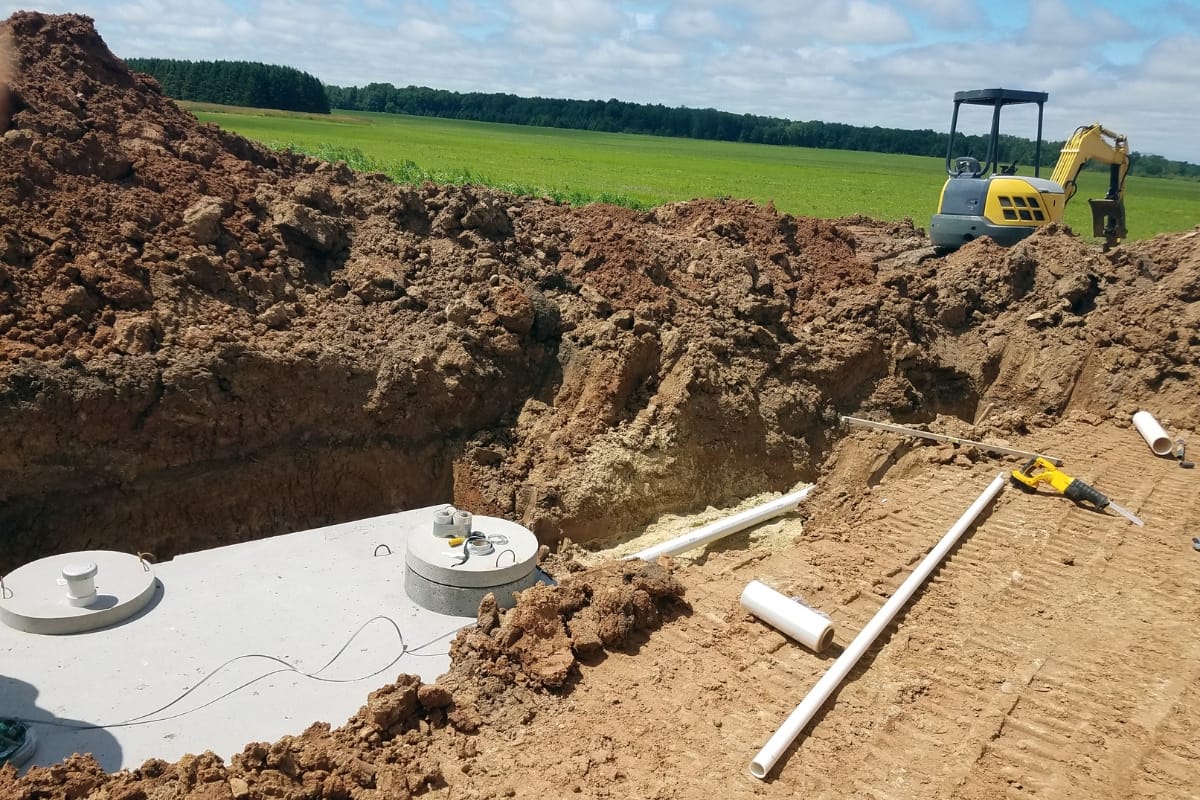
Advanced nitrogen-reducing septic systems present an effective solution for tackling nitrogen emissions from sewage treatment and protecting the ecology of nearby water bodies.
For homeowners considering an upgrade, understanding the process and associated costs of transitioning to these advanced systems is crucial for making informed decisions that benefit both their property and the surrounding ecosystem.
Overview of Advanced Treatment Systems
Advanced treatment systems work by enhancing the natural processes that take place in traditional septic setups. They utilize specialized bacteria that break down waste more efficiently, allowing for better treatment and reduction of nutrient pollution.
How These Systems Specifically Target and Reduce Nitrogen
Advanced nitrogen-reducing septic systems effectively target nitrogen by employing a combination of specialized bacteria and design features. These systems break down human waste in a way that minimizes nitrogen emissions, protecting essential aquifers and ensuring a clean water supply.
By focusing on reducing nitrogen levels, these systems play a crucial role in maintaining the quality of water resources vital for both residents and the surrounding ecosystem.
The Process and Cost of Upgrading Your Septic System
Upgrading to an advanced nitrogen-reducing septic tank is a practical solution for homeowners looking to minimize their nitrogen emissions. This process usually involves installing new treatment systems that have been researched and developed to enhance natural waste breakdown.
While costs can vary based on the specific system and installation requirements, the investment ultimately benefits local ecosystems, including nearby estuaries and aquaculture efforts, by providing cleaner, safer water.
Upgrading to advanced nitrogen-reducing septic systems is just the first step towards better efficiency. Regular maintenance plays a vital role in maximizing these systems’ performance and ensuring lasting benefits.
Regular Maintenance to Enhance Nitrogen Reduction
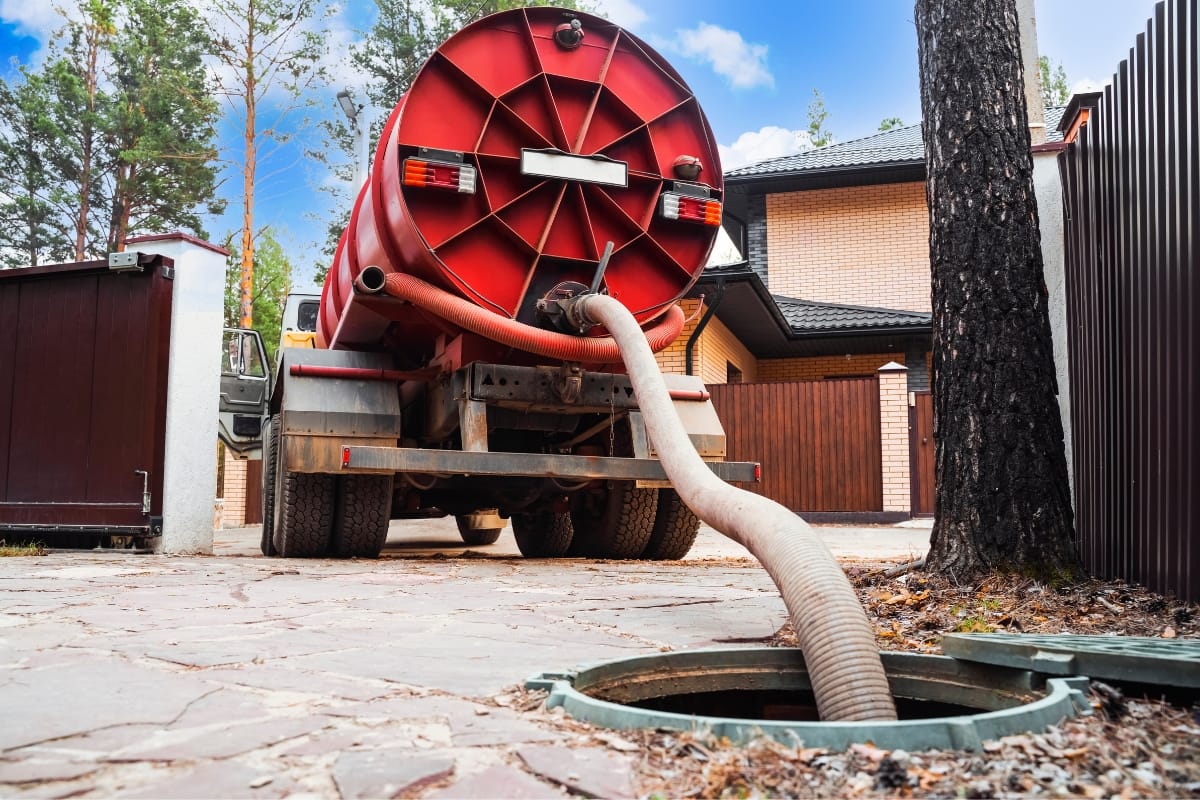
Regular maintenance is key for septic systems aiming to lower nitrogen emissions. Timely pumping of septic tanks ensures that waste does not decompose inefficiently, which can lead to the release of nitrates into the groundwater.
Conducting systematic inspections and maintenance checks helps identify any potential issues that might cause nitrogen leakages, safeguarding both the property and local water quality.
Additionally, adjusting water usage can relieve strain on the system, allowing the biofilter to function optimally and reduce the need for excessive fertilizer runoff. By focusing on these strategies, homeowners can enhance their septic systems’ efficiency while contributing to a healthier environment.
The Importance of Regular Septic Tank Pumping
Regular septic tank pumping is essential for maintaining water quality and preventing issues associated with eutrophication. When tanks are not pumped timely, wastewater treatment becomes inefficient, allowing harmful nutrients to seep into surface water and promoting algae growth that depletes oxygen levels. By ensuring tanks are emptied regularly, homeowners can protect their property and preserve the delicate balance of local ecosystems.
| Importance of Regular Pumping | Effects on Water Quality | Consequences of Neglect |
|---|---|---|
| Enhances wastewater treatment | Improves oxygen levels | Leads to eutrophication |
| Prevents surface water contamination | Supports aquatic life | Disrupts local ecosystems |
Inspections and Maintenance Checks to Prevent Nitrogen Leakages
Regular inspections and maintenance checks of septic tanks are crucial for preventing nitrogen leakages.
By identifying potential issues early, homeowners can assess the concentration of nitrogen compounds within their wastewater systems, which helps protect delicate habitats affected by climate change. If left unchecked, these leakages can lead to larger environmental problems, emphasizing the need for diligent upkeep.
- Inspect the septic tank regularly for any signs of wear or potential leaks.
- Monitor nitrogen concentrations in the wastewater to ensure compliance with environmental standards.
- Conduct maintenance checks to address any issues that may threaten local ecosystems.
Adjusting Water Usage to Minimize System Strain
Adjusting water usage can significantly ease the strain on septic systems and enhance filtration processes. By being mindful of water consumption, homeowners can help maintain optimal conditions for denitrification, which ultimately protects local ecosystems.
This approach also benefits agriculture by ensuring that runoff is minimized, thus supporting sustainable development practices during construction projects.
- Mindful water usage helps maintain optimal filtration.
- Optimal conditions promote effective denitrification.
- Minimizes runoff, benefiting agriculture and construction efforts.
Regular maintenance paves the way for effective nitrogen management. Let’s jump into some cutting-edge biological methods that can truly make a difference!
Implementing Biological Nitrogen Removal Methods
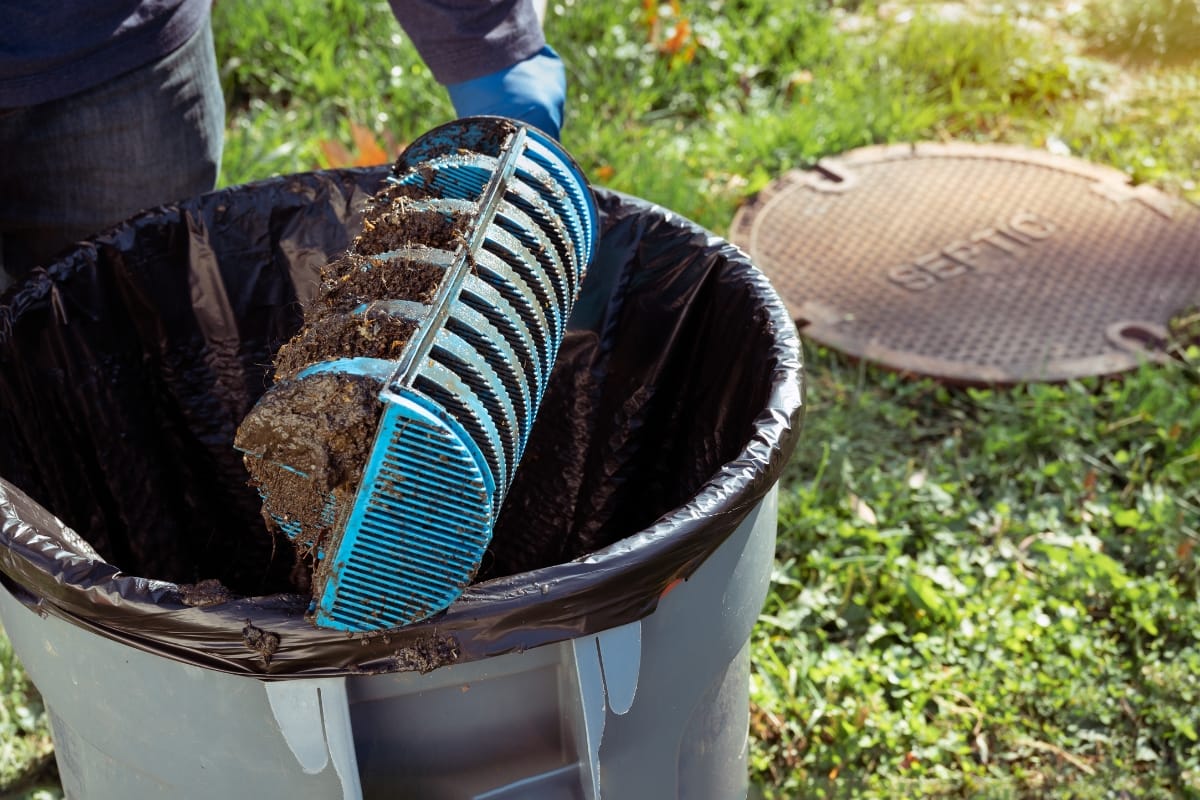
Biological nitrogen removal (BNR) stands out as an efficient and eco-friendly method for lowering nitrogen emissions from septic systems. This strategy involves leveraging the power of various bioremediation techniques that utilize natural processes to break down organic matter and convert harmful nutrients.
Introduction to Biological Nitrogen Removal
Biological nitrogen removal (BNR) represents a notable innovation in addressing nitrogen emissions from septic systems.
This method utilizes naturally occurring microbes to break down organic matter and convert harmful nitrogen compounds into less toxic forms, thus reducing nitrogen pollution and preventing contamination of local waterways.
For many homeowners, understanding how BNR works can alleviate concerns about the impacts on drinking water quality, offering effective responses to frequently asked questions (FAQ) about septic system performance.
| Aspect of BNR | Role in Nitrogen Pollution Control | Benefit for Drinking Water |
|---|---|---|
| Microbial Action | Breaks down nitrogen compounds | Reduces contamination risks |
| Natural Processes | Minimizes nutrient runoff | Improves overall water quality |
Different Bioremediation Techniques for Septic Systems
Bioremediation techniques for septic systems focus on enhancing natural processes to tackle nitrogen emissions effectively. By utilizing specific microorganisms that consume nitrogen compounds, these methods help minimize nutrient runoff, reducing the risk of algal blooms in nearby water bodies.
Implementing such techniques not only improves the performance of septic systems but also protects local ecosystems from the harmful effects of excess nitrogen.
The Role of Microbes in Reducing Nitrogen Emissions
Microbes play a pivotal role in managing nitrogen levels within septic systems. These tiny organisms actively break down organic materials and transform nitrogen compounds into less harmful forms, significantly decreasing the potential for nitrogen pollution.
By harnessing their natural processes, septic systems can effectively reduce nitrogen emissions.
Understanding how to utilize these microbes can enhance the efficiency of septic systems:
- Microbes consume nitrogen compounds during waste breakdown.
- They help turn harmful forms of nitrogen into safer substances.
- Leveraging their activity supports overall ecosystem health.
Introducing biological nitrogen removal methods sets the stage for innovative solutions. Now, let’s explore the power of incorporating natural methods for effective nitrogen absorption.
Incorporating Natural Solutions for Nitrogen Absorption

Employing natural solutions to absorb nitrogen is a smart approach that can greatly benefit septic systems. One effective strategy involves planting nitrogen-absorbing plants around drain fields, which helps to take up excess nitrogen before it reaches groundwater.
Constructed wetlands also come into play, providing a natural barrier that enhances nitrogen filtration while promoting biodiversity. Additionally, implementing buffer zones around septic systems further aids in preventing runoff and captures potential contaminants.
These methods support both the health of the septic system and the surrounding environment, making them worthwhile practices for homeowners and businesses alike.
Planting Nitrogen-Absorbing Plants Around Drain Fields
Planting nitrogen-absorbing plants around drain fields is a practical way to enhance the efficiency of septic systems while promoting a healthier environment.
These plants take up excess nitrogen from the soil, helping to reduce the amount that seeps into groundwater. By integrating greenery into the landscape, homeowners not only support their septic systems but also contribute to local biodiversity and improve the overall aesthetics of their yards.
Using Constructed Wetlands to Enhance Nitrogen Filtration
Constructed wetlands act as a natural filtration system, improving the effectiveness of septic systems in reducing nitrogen levels.
These carefully designed ecosystems utilize a mix of plants and microorganisms that filter excess nitrogen from wastewater as it passes through.
The Benefit of Buffer Zones in Preventing Runoff
Buffer zones serve as a crucial barrier that helps filter out excess nitrogen before it reaches water bodies. These zones, often established with vegetation, not only absorb nutrients but also slow down runoff, giving the soil a chance to absorb harmful contaminants.
| Buffer Zone Benefits | How It Works | Impact on Environment |
|---|---|---|
| Absorbs excess nitrogen | Plants take up nutrients from the soil | Improves water quality in nearby bodies |
| Reduces runoff speed | Slows down water flow | Minimizes soil erosion |
Natural solutions not only enhance soil health, but they also spark community engagement. Now, communities are stepping up to tackle nitrogen pollution head-on with innovative initiatives.
Community Initiatives to Reduce Overall Nitrogen Pollution

Community initiatives play a vital role in reducing nitrogen pollution from septic systems and enhancing overall environmental health. These initiatives form a strong backbone for protecting local water quality and ecosystems.
The Impact of Community Education on Septic System Care
Community education significantly enhances septic system care by informing homeowners about proper maintenance practices. Local workshops and information sessions can empower residents with the knowledge they need to keep their systems running efficiently, thus reducing nitrogen emissions.
With increased understanding, community members become proactive in caring for their septic systems, leading to healthier neighborhoods and cleaner waterways.
Establishing Local Guidelines for Nitrogen Pollution Control
Establishing local guidelines for nitrogen pollution control is essential for protecting water quality and fostering sustainable septic system practices.
Clear regulations can guide residents on proper maintenance and waste management techniques, ultimately reducing the nitrogen load on local ecosystems.
By involving community members in the decision-making process, these guidelines can address specific regional challenges and build a sense of responsibility towards the environment.
Collaborative Efforts for Regular Community-Wide Septic Inspections
Collaborative efforts for community-wide septic inspections can significantly enhance local environmental health by ensuring every system is functioning optimally.
This proactive approach allows neighbors to work together, sharing insights and resources, which fosters a sense of responsibility and accountability for wastewater management.
| Benefits of Community-Wide Inspections | How It Works | Impact on Environment |
|---|---|---|
| Improves overall system performance | Neighbors participate in coordinated inspections | Reduces nitrogen emissions collectively |
| Promotes community engagement | Fosters shared responsibility for waste management | Enhances local water quality |
By organizing regular inspections, communities not only identify and rectify potential issues but also strengthen bonds among residents, promoting a unified vision for environmental stewardship.
Conclusion
Implementing strategies to reduce nitrogen pollution in septic systems is essential for protecting both your property and the surrounding environment.
By choosing the right approaches, such as advanced treatment systems and regular maintenance, you can significantly lessen the impact of nitrogen on local waterways and soil.
For expert advice and septic services tailored to effective nitrogen reduction, trust Smart Septic Pros. Contact us at 678-993-4545 or visit our website to get in touch with us and start creating a healthier, more sustainable septic system today.
